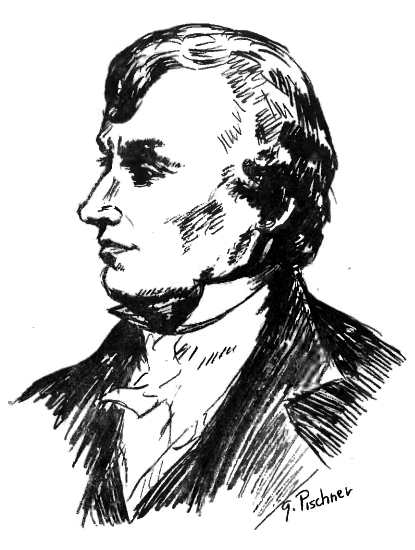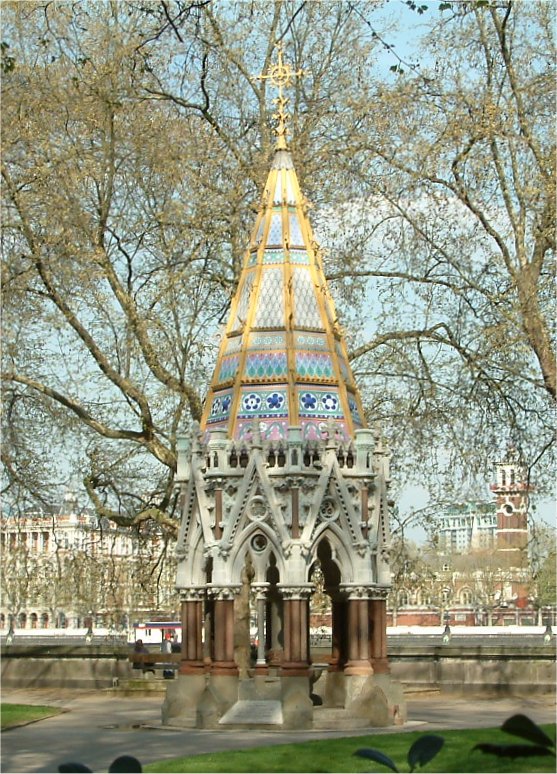|
American Anti-Slavery Reporter
The ''American Anti-Slavery Reporter'' was a short-lived monthly periodical published by the American Anti-Slavery Society. The ''Reporter''’s intention was to be filled with "authentic matters of fact" as well as essays on slavery in the United States. The first issue was released in the month of January, 1834, and contains reviews of speeches and proceedings from a recent meeting of the American Colonization Society. The launch of the ''American Anti-Slavery Reporter'' coincided with the discontinuation of ''The Abolitionist'', another monthly periodical with a similar purpose. The American Anti-Slavery Society The American Anti-Slavery Society (AASS; 1833–1870) was an abolitionist society founded by William Lloyd Garrison and Arthur Tappan. Frederick Douglass, an escaped slave, had become a prominent abolitionist and was a key leader of this society ..., publishing from the Society's office in New York City, published eight issues, from January to August 1834. Exter ... [...More Info...] [...Related Items...] OR: [Wikipedia] [Google] [Baidu] |
Periodical Literature
A periodical literature (also called a periodical publication or simply a periodical) is a published work that appears in a new edition on a regular schedule. The most familiar example is a newspaper, but a magazine or a Academic journal, journal are also examples of periodicals. These publications cover a wide variety of topics, from academic, technical, trade, and general interest to leisure and entertainment. Article (publishing), Articles within a periodical are usually organized around a single main subject or theme and include a title, date of publication, author(s), and brief summary of the article. A periodical typically contains an editorial section that comments on subjects of interest to its readers. Other common features are reviews of recently published books and films, columns that express the author's opinions about various topics, and advertisements. A periodical is a serial publication. A book is also a serial publication, but is not typically called a periodical ... [...More Info...] [...Related Items...] OR: [Wikipedia] [Google] [Baidu] |
American Anti-Slavery Society
The American Anti-Slavery Society (AASS; 1833–1870) was an abolitionist society founded by William Lloyd Garrison and Arthur Tappan. Frederick Douglass, an escaped slave, had become a prominent abolitionist and was a key leader of this society, who often spoke at its meetings. William Wells Brown, also a freedman, also often spoke at meetings. By 1838, the society had 1,350 local chapters with around 250,000 members. Noted members included Susan B. Anthony, Elizabeth Cady Stanton, Theodore Dwight Weld, Lewis Tappan, James G. Birney, Lydia Maria Child, Maria Weston Chapman, Augustine Clarke, Samuel Cornish, George T. Downing, James Forten, Abby Kelley Foster, Stephen Symonds Foster, Henry Highland Garnet, Beriah Green, who presided over its organizational meeting, Lucretia Mott, Wendell Phillips, Robert Purvis, Charles Lenox Remond, Sarah Parker Remond, Lucy Stone, and John Greenleaf Whittier, among others. Headquartered in New York City, from 1840 to 1870 ... [...More Info...] [...Related Items...] OR: [Wikipedia] [Google] [Baidu] |
Slavery In The United States
The legal institution of human chattel slavery, comprising the enslavement primarily of Africans and African Americans, was prevalent in the United States of America from its founding in 1776 until 1865, predominantly in the South. Slavery was established throughout European colonization in the Americas. From 1526, during early colonial days, it was practiced in what became Britain's colonies, including the Thirteen Colonies that formed the United States. Under the law, an enslaved person was treated as property that could be bought, sold, or given away. Slavery lasted in about half of U.S. states until abolition. In the decades after the end of Reconstruction, many of slavery's economic and social functions were continued through segregation, sharecropping, and convict leasing. By the time of the American Revolution (1775–1783), the status of enslaved people had been institutionalized as a racial caste associated with African ancestry. During and immediately ... [...More Info...] [...Related Items...] OR: [Wikipedia] [Google] [Baidu] |
American Colonization Society
The American Colonization Society (ACS), initially the Society for the Colonization of Free People of Color of America until 1837, was an American organization founded in 1816 by Robert Finley to encourage and support the migration of freeborn blacks and emancipated slaves to the continent of Africa. The American Colonization Society was established to address the prevailing view that free people of color could not integrate into U.S. society; their population had grown steadily following the American Revolutionary War, from 60,000 in 1790 to 300,000 by 1830. Slaveowners feared that these free Blacks might help their slaves to escape or rebel. In addition, many white Americans believed that African Americans were an inferior race, and, therefore, should be relocated to a place where they could live in peace, a place where they would not encounter prejudice, a place where they could be citizens. The African American community and the abolitionist movement overwhelmingly oppos ... [...More Info...] [...Related Items...] OR: [Wikipedia] [Google] [Baidu] |
The Abolitionist
President of the United States, Presidents of the United States have often acquired nicknames, both flattering and unflattering. This list is intended to note those nicknames that were in common use at the time they were in office or shortly thereafter. George Washington * The American Cincinnatus: Like the famous Roman, he won a war, then became a private citizen instead of seeking power or riches as a reward. He became the first president general of the Society of the Cincinnati, formed by Revolutionary War officers who also "declined offers of power and position to return to his home and plough". * The American Quintus Fabius Maximus Verrucosus, Fabius for his Fabian strategy, Fabian military strategy during the American Revolutionary War, Revolutionary War * The Father of His Country John Adams * The Colossus of Independence for his leadership in Congress in 1776 * Old Sink or Swim, for the speech in which he vowed "sink or swim, live or die, survive or perish, I am with m ... [...More Info...] [...Related Items...] OR: [Wikipedia] [Google] [Baidu] |
The Liberator (newspaper)
''The Liberator'' (1831–1865) was a weekly abolitionist newspaper, printed and published in Boston by William Lloyd Garrison and, through 1839, by Isaac Knapp. Religious rather than political, it appealed to the moral conscience of its readers, urging them to demand immediate freeing of the slaves ("immediatism"). It also promoted women's rights, an issue that split the American abolitionist movement. Despite its modest circulation of 3,000, it had prominent and influential readers, including Frederick Douglass, Beriah Green and Alfred Niger. It frequently printed or reprinted letters, reports, sermons, and news stories relating to American slavery, becoming a sort of community bulletin board for the new abolitionist movement that Garrison helped foster. History Garrison co-published weekly issues of ''The Liberator'' from Boston continuously for 35 years, from January 1, 1831, to the final issue of December 29, 1865. Although its circulation was only about 3,000, and th ... [...More Info...] [...Related Items...] OR: [Wikipedia] [Google] [Baidu] |
Abolitionist Newspapers Published In The United States
Abolitionism, or the abolitionist movement, is the movement to end slavery. In Western Europe and the Americas, abolitionism was a historic movement that sought to end the Atlantic slave trade and liberate the enslaved people. The British abolitionist movement started in the late 18th century when English and American Quakers began to question the morality of slavery. James Oglethorpe was among the first to articulate the Enlightenment case against slavery, banning it in the Province of Georgia on humanitarian grounds, and arguing against it in Parliament, and eventually encouraging his friends Granville Sharp and Hannah More to vigorously pursue the cause. Soon after Oglethorpe's death in 1785, Sharp and More united with William Wilberforce and others in forming the Clapham Sect. The Somersett case in 1772, in which a fugitive slave was freed with the judgement that slavery did not exist under English common law, helped launch the British movement to abolish slavery. Th ... [...More Info...] [...Related Items...] OR: [Wikipedia] [Google] [Baidu] |
Newspapers Published In New York City
A newspaper is a periodical publication containing written information about current events and is often typed in black ink with a white or gray background. Newspapers can cover a wide variety of fields such as politics, business, sports and art, and often include materials such as opinion columns, weather forecasts, reviews of local services, obituaries, birth notices, crosswords, editorial cartoons, comic strips, and advice columns. Most newspapers are businesses, and they pay their expenses with a mixture of subscription revenue, newsstand sales, and advertising revenue. The journalism organizations that publish newspapers are themselves often metonymically called newspapers. Newspapers have traditionally been published in print (usually on cheap, low-grade paper called newsprint). However, today most newspapers are also published on websites as online newspapers, and some have even abandoned their print versions entirely. Newspapers developed in the 17th century, as ... [...More Info...] [...Related Items...] OR: [Wikipedia] [Google] [Baidu] |
1834 Establishments In New York (state)
Events January–March * January – The Wilmington and Raleigh Railroad is chartered in Wilmington, North Carolina. * January 1 – Zollverein (Germany): Customs charges are abolished at borders within its member states. * January 3 – The government of Mexico imprisons Stephen F. Austin in Mexico City. * February 13 – Robert Owen organizes the Grand National Consolidated Trades Union in the United Kingdom. * March 6 – York, Upper Canada, is incorporated as Toronto. * March 11 – The United States Survey of the Coast is transferred to the Department of the Navy. * March 14 – John Herschel discovers the open cluster of stars now known as NGC 3603, observing from the Cape of Good Hope. * March 28 – Andrew Jackson is censured by the United States Congress (expunged in 1837). April–June * April 10 – The LaLaurie mansion in New Orleans burns, and Madame Marie Delphine LaLaurie flees to France. * April 14 – The Whig Party is officially named by Unite ... [...More Info...] [...Related Items...] OR: [Wikipedia] [Google] [Baidu] |
1834 Disestablishments In New York (state)
Events January–March * January – The Wilmington and Raleigh Railroad is chartered in Wilmington, North Carolina. * January 1 – Zollverein (Germany): Customs charges are abolished at borders within its member states. * January 3 – The government of Mexico imprisons Stephen F. Austin in Mexico City. * February 13 – Robert Owen organizes the Grand National Consolidated Trades Union in the United Kingdom. * March 6 – York, Upper Canada, is incorporated as Toronto. * March 11 – The United States Survey of the Coast is transferred to the Department of the Navy. * March 14 – John Herschel discovers the open cluster of stars now known as NGC 3603, observing from the Cape of Good Hope. * March 28 – Andrew Jackson is censured by the United States Congress (expunged in 1837). April–June * April 10 – The LaLaurie mansion in New Orleans burns, and Madame Marie Delphine LaLaurie flees to France. * April 14 – The Whig Party is official ... [...More Info...] [...Related Items...] OR: [Wikipedia] [Google] [Baidu] |
Magazines Published In New York City
A magazine is a periodical publication, generally published on a regular schedule (often weekly or monthly), containing a variety of content. They are generally financed by advertising, purchase price, prepaid subscriptions, or by a combination of the three. Definition In the technical sense a '' journal'' has continuous pagination throughout a volume. Thus ''Business Week'', which starts each issue anew with page one, is a magazine, but the '' Journal of Business Communication'', which continues the same sequence of pagination throughout the coterminous year, is a journal. Some professional or trade publications are also peer-reviewed, for example the '' Journal of Accountancy''. Non-peer-reviewed academic or professional publications are generally ''professional magazines''. That a publication calls itself a ''journal'' does not make it a journal in the technical sense; ''The Wall Street Journal'' is actually a newspaper. Etymology The word "magazine" derives from Arabic , ... [...More Info...] [...Related Items...] OR: [Wikipedia] [Google] [Baidu] |




.jpg)


